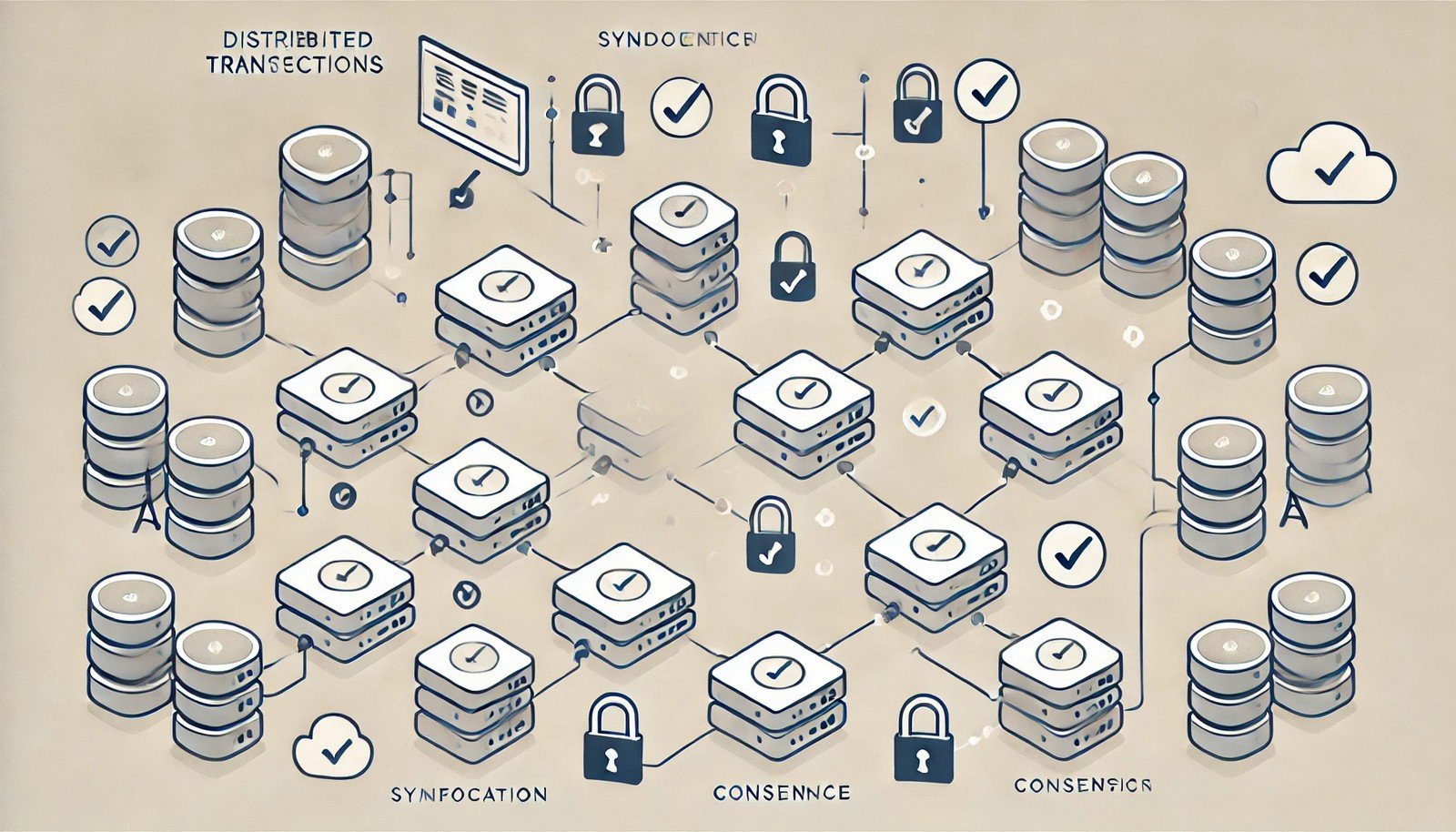Distributed Transactions
 (Representational Image | Source: Dall-E)
(Representational Image | Source: Dall-E)
Quick Navigation:
- Distributed Transactions Definition
- Distributed Transactions Explained Easy
- Distributed Transactions Origin
- Distributed Transactions Etymology
- Distributed Transactions Usage Trends
- Distributed Transactions Usage
- Distributed Transactions Examples in Context
- Distributed Transactions FAQ
- Distributed Transactions Related Words
Distributed Transactions Definition
Distributed transactions are a type of database transaction that spans multiple systems or servers, ensuring data consistency across distributed components. They follow the principles of ACID (Atomicity, Consistency, Isolation, Durability), making them crucial for scenarios like financial systems and distributed databases. Middleware like Two-Phase Commit (2PC) or advanced consensus algorithms like Paxos and Raft often facilitate these transactions.
Distributed Transactions Explained Easy
Imagine you have a toy store with branches in two cities. If a customer orders a toy from both branches, you want to make sure the toy is deducted from the stock of each store simultaneously. Distributed transactions help ensure both branches agree on the change so there are no mistakes, like selling more toys than you have.
Distributed Transactions Origin
The concept emerged with the advent of distributed computing in the 1970s and 1980s, as businesses began using multiple servers to handle increasing loads. Ensuring consistency across these distributed systems became a vital challenge.
Distributed Transactions Etymology
The term originates from "distributed," referring to systems spread across multiple locations, and "transaction," indicating a unit of work in a database.
Distributed Transactions Usage Trends
With the growth of cloud computing and microservices, distributed transactions have become increasingly common. They are used in financial systems, e-commerce platforms, and any domain requiring reliable, consistent operations across distributed systems. However, their complexity has also led to alternatives like eventual consistency models in certain cases.
Distributed Transactions Usage
- Formal/Technical Tagging:
- Distributed Systems
- Database Management
- Cloud Computing - Typical Collocations:
- "distributed transaction processing"
- "two-phase commit protocol"
- "atomic distributed operations"
- "cross-database transactions"
Distributed Transactions Examples in Context
- A banking application ensures consistency when transferring money between two accounts across different servers.
- Online stores use distributed transactions to update inventory and process payments simultaneously across regions.
- Microservices use distributed transactions to maintain data consistency when executing related operations across services.
Distributed Transactions FAQ
- What are distributed transactions?
Distributed transactions ensure operations are consistent across multiple systems or servers. - Why are distributed transactions important?
They maintain data accuracy and reliability in distributed environments. - What is the Two-Phase Commit protocol?
It's a protocol ensuring all participating systems agree before committing a transaction. - Are distributed transactions always necessary?
No, simpler models like eventual consistency might suffice for some applications. - Can distributed transactions work in cloud environments?
Yes, many cloud databases and services support distributed transactions. - What are some challenges of distributed transactions?
Latency, network failures, and complexity in ensuring consistency are common challenges. - What is a compensating transaction?
It undoes the effects of a failed distributed transaction to maintain consistency. - How do distributed transactions relate to microservices?
They ensure consistency in operations across services interacting in a microservices architecture. - Are distributed transactions slow?
They can be slower due to communication and coordination overhead. - What alternatives exist to distributed transactions?
Alternatives include eventual consistency, CQRS (Command Query Responsibility Segregation), and Saga patterns.
Distributed Transactions Related Words
- Categories/Topics:
- Distributed Systems
- Database Transactions
- Cloud Infrastructure
Did you know?
In 2008, a famous stock exchange incident highlighted the importance of distributed transactions. A network delay caused discrepancies in stock orders across servers, leading to millions in losses. This spurred innovations in distributed transaction protocols to handle such critical scenarios.
PicDictionary.com is an online dictionary in pictures. If you have questions or suggestions, please reach out to us on WhatsApp or Twitter.Authors | Arjun Vishnu | @ArjunAndVishnu

I am Vishnu. I like AI, Linux, Single Board Computers, and Cloud Computing. I create the web & video content, and I also write for popular websites.
My younger brother, Arjun handles image & video editing. Together, we run a YouTube Channel that's focused on reviewing gadgets and explaining technology.



Comments powered by CComment